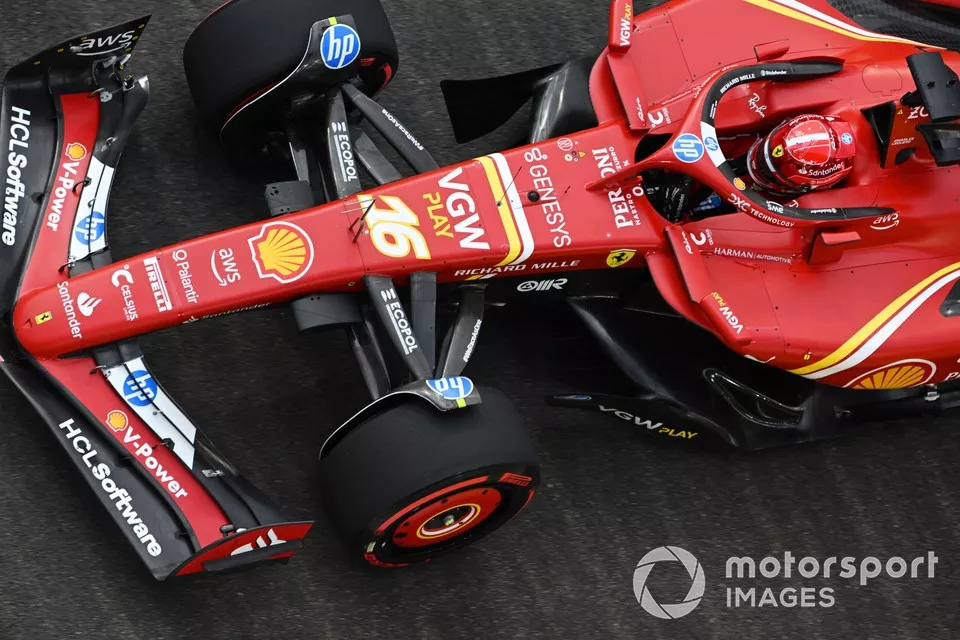Ferrari SF-24: why new front wing is more important than it seems amid downforce, stability and flexing

Yesterday at 10:46 AM
It was expected in Austin at Circuit of the Americas, but it already arrived this weekend in Singapore. The SF-24 debuts a new front wing, which, after the floor, represents the most important aerodynamic component in current Formula 1 cars. The modifications are not specific to the Asian track, as they are suitable for all the circuits still scheduled for the remainder of the year. This is the first update to the front wing since the start of the 2024 Formula 1 championship and although the changes may seem subtle, they are of significant importance.
The Singapore wing
The changes to the wing concern the last two upper elements, specifically the third and fourth profiles. The contour of the flaps differs as they taper towards the outside, with the portion closest to the nose staying high before sharply sloping downwards. Compared to the previous version, the new wing generates more downforce in the inner portion than the outer. Overall, the maximum downforce produced has increased, allowing for better balance with even more rear-loaded setups. Ferrari now has an important tool, especially considering that on some tracks this year the team has been limited by insufficient front-end downforce.
Another change involves the connection between the last two profiles and the vertical endplate strut. A different bridge now links the flaps to the external endplate, where the curls also feature a more outward-curved design. Ferrari aims to increase the outwash effect, directing airflow around the front tire and mitigating the negative impact tire turbulence has on the aerodynamics of the floor.
The importance of the front wing
The modifications to the endplate area highlight the critical role the front wing plays in the car’s performance. The front wing is the most forward component of the car, setting the aerodynamic foundation and airflow that impacts the rest of the vehicle. Specifically, the central portion of the wing directs airflow towards the front suspension arms, which in turn distribute it between the upper and lower sections of the floor.
Just as drivers complain about the aerodynamic disturbance from the car ahead during a race, every car's floor and rear wing are constantly working in the wake of the front wing. It's easy to understand its importance, considering that the wing is also designed to counteract the turbulence generated by the front tires. In the documents submitted to the Federation, Ferrari describes the modifications as "improvements in downstream airflow across a wider polar range." In other words, the goal is to control tire turbulence at greater steering angles and yaw, ensuring more aerodynamic stability for the floor when the car slides in corners or faces crosswinds.
Seeking flexibility
Flexible front wings have been under scrutiny in recent weeks, leading to speculation that Ferrari may also be seeking more deformation in the new wing to gain a few extra kilometers per hour. Footage from the track will confirm or dispel these suspicions. However, given that the latest changes focus more aerodynamic load on the inner section of the wing, it is plausible to expect greater flexing. The biggest gain, though, is the early debut of the wing in Singapore, allowing Ferrari to gather data a month ahead of time to plan future updates. The opportunity lies in adapting the floor and bodywork to the new aerodynamic structure introduced by the redesigned front end, which would thus represent only the first step in the evolutionary process underway at Maranello.
The post Ferrari SF-24: why new front wing is more important than it seems amid downforce, stability and flexing appeared first on Scuderia Fans.


